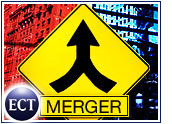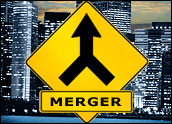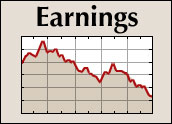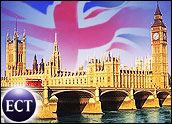
Reverse shell mergers have emerged as the de facto global IPO marketplace for emerging growth companies. Last year, there were 222 completed reverse merger transactions. Collectively, they were valued at US$8.36 billion, a 14 percent increase over the previous year.
We expect 2008 to show greater increases with the approval of several new rules by the Securities and Exchange Commission that went into effect the beginning of this year. One of the revised rules will allow reverse merger companies to raise financing with better terms and conditions due to the reduced holding period — from one year to six months — of Rule 144K. For a complete review of all of the new rule changes, go to the SEC Web site. With the passing of these new rules, the SEC has sent a loud message to the financial community that they now accept reverse mergers as a viable way for companies to go public.
No individual month witnessed less than double digit deals coming to market; a feat that has not occurred in almost 25 years, according to DealFlow Media. The most interesting statistic is that the average reverse merger deal in 2007 was valued at $55.55 million. This is a substantial number, for it supports the theory that the average companies performing reverse mergers are longer just startups.
With current prices now going between $600K and $900K, shells are attracting established companies that possess both revenues and earnings. The pricing has also eliminated promoters, charlatans and startups that do no possess proper financial backing.
Participation by International Firms
In comparison with the reverse merger statistics for last year, the traditional IPO marketplace in 2007 produced 234 deals with an average deal size of $229 million with aggregate proceeds of $54 billion, according to IPO Home. This is an 18 percent increase over the number of deals closed in 2006 and a 6 percent increase in the average deal size. The aggregate total proceeds were impressive, with a 25 percent increase from the previous year.
The average return was down 50 percent, dropping from an average of 26 percent in 2006 to 13 percent for 2007. Basically, what this tells us is that traditional IPOs are still getting completed — but the upside is limited. It also reveals that traditional underwriters are still only interested in IPOs of companies that will have a billion-dollar valuation.
We have also seen greater participation of foreign companies using reverse mergers to get their companies listed in the U.S. markets. The OTCBB (Over the Counter Bulletin Board) shell is the perfect vehicle for these companies. It is no secret the SEC is very stringent in their review and approval process of foreign companies seeking to gain entry in the U.S. — and for good reason.
If something goes wrong, it is very difficult for the SEC to impose U.S. laws and sanctions on companies domiciled outside of the U.S. A reverse merger into an OTCBB shell allows these companies access to the U.S. markets much quicker than if they chose to file a traditional registration statement with the SEC.
Chinese Reverse Mergers for 2007
Last year, China’s State Administration of Foreign Exchange issued a rule titled “Circular 106,” which went into effect in the summer of 2007. The new rule required Chinese companies that set up offshore entities for domestic investment to receive approval from Chinese regulators prior to establishing such offshore jurisdiction. At first, the new rule caused quite a panic, for it was anticipated that it was implemented to halt Chinese based companies from going public outside of China. However, as it turned out, this certainly was not the case.
We witnessed a substantial increase in deals coming to market from China in 2007. Sixty-nine companies went public in the U.S. via a reverse merger. This number represents almost 33 percent of the total number of reverse mergers last year. The numbers reflect a 30 percent year to year increase with 28 mergers in the fourth quarter of 2007 alone. The Chinese deals, as an aggregate, were valued at almost $1.5 billion with a third of those numbers occurring in the fourth quarter of 2007.
The China-based companies we have witnessed to date have demonstrated strong revenues and profits, and usually value their companies at low P/E (price/earnings) ratios. They prefer to have the earnings per share translate into a starting stock price closer to what NASDAQ (National Association of Securities Dealers Automated Quotations) requires, usually at or above $4 per share. This, we believe, is due to their ability to think long term with an eye toward eventually qualifying for a listing on exchanges like NASDAQ or NYSE (New York Stock Exchange).
Chinese reverse mergers are also very appealing to funding sources because the valuations of the companies are funded at low P/E ratios and thus provide substantial upside for potential investors. I believe we will see a substantial number of new deals coming out of China in 2008. Additionally, deals from other parts of Asia are starting to trickle into the U.S. markets.
Alternative Public Offerings
Of the 222 reverse mergers that were completed in 2007, almost 100 (45 percent) included a private placement in conjunction with the merger. The private placements averaged approximately $9 million per deal. As previously stated, the average market cap per deal in 2007 was $55.55 million.
As we move into 2008, we should witness a significant increase in both pre- and post-merger private placements, now that the SEC has reduced the Rule 144 holding period from one year to six months. This new rule, which goes into effect this month, will allow companies to raise capital under better terms and conditions.
PIPES in 2007
Rodman and Renshaw was ranked No. 1 for the most active investment bank while Enable Capital Management ranked as the No. 1 most active institutional investor in the PIPE (private investments in public entities) market in 2007.
PlacementTracker, a flagship product of Sagient Research Systems, is well-recognized as the leading provider of research, data, and analytics covering the PIPE market.
Commenting on the League Tables, Robert F. Kyle, executive vice president of Sagient Research, said, “The PIPE market hit historic levels in 2007.” Here are some of the highlights:
- Sichenzia Ross Friedman Ference ranked as the No. 1 most active issuer counsel.
- Schulte Roth & Zabel ranked as the No. 1 most active investor counsel in the PIPE market in 2007.
- PIPE market with a total of $83.59 billion raised in 1,434 transactions. 2007 is the fourth consecutive record-setting year in the PIPE market.
- 2007 full year total was $54.3 billion exceeding the previous record level of $29.35 billion set in 2006 by 185 percent.
Though 2007 was a record-setting year for shell mergers and associated financings, 2008 should be even better. For further information regarding reverse mergers, go here.
Ralph Amato is founder and CEO of Ventana Capital Partners, which specializes in reverse shell mergers.
















































Social Media
See all Social Media